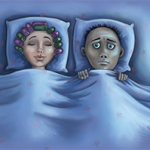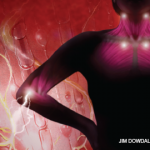 Rheumatologists traditionally focus on the autoimmune symptoms of systemic lupus erythematosus (SLE) and often consider fatigue, chronic pain, unrefreshed sleep and mood disorders separate or coincidental to SLE disease activity. Although fatigue is one of the presenting symptoms of SLE, researchers have found no consistent association between fatigue and SLE disease activity as measured by the Systemic Lupus Erythematosus Disease Activity Index (SLEDAI). In many cases, fatigue persists even if the traditional inflammatory symptoms of SLE are in remission.
Rheumatologists traditionally focus on the autoimmune symptoms of systemic lupus erythematosus (SLE) and often consider fatigue, chronic pain, unrefreshed sleep and mood disorders separate or coincidental to SLE disease activity. Although fatigue is one of the presenting symptoms of SLE, researchers have found no consistent association between fatigue and SLE disease activity as measured by the Systemic Lupus Erythematosus Disease Activity Index (SLEDAI). In many cases, fatigue persists even if the traditional inflammatory symptoms of SLE are in remission.
A recent study reinforces the growing understanding that many SLE patients experience persistent and maladaptive fatigue that should be considered a symptom of SLE. The new findings are consistent with a conceptual model of SLE that categorizes SLE manifestations as type 1, which includes active inflammatory manifestations, and type 2, which includes fatigue, widespread pain, cognitive dysfunction, sleep disturbance and depression.
Jennifer L. Rogers, MD, a rheumatologist at Duke University Medical Center, Durham, N.C., and colleagues report that identifying the symptoms of type 2 SLE may improve patient communication and understanding. The results, published online Jan. 7 in Arthritis Care & Research, indicate that patients with more and stronger type 2 SLE symptoms perceive themselves as having worse disease and more active lupus flares.1 The findings suggest it may be necessary for rheumatologists to reinterpret the Systemic Lupus Activity Questionnaire (SLAQ) or other self-reported symptoms based on the fibromyalgia severity scale.
For the study, the investigators used patient-reported outcomes and measures of SLE disease activity to assess inflammatory and non-inflammatory patient symptoms. Their findings suggest SLE patients consider symptoms of fatigue, widespread pain, myalgia and cognitive dysfunction to be part of lupus. Moreover, fibromyalgia symptoms, such as fatigue, widespread pain, sleep disturbances, cognitive dysfunction and depression, were common in SLE patients, meaning that 20% of SLE patients meet the full 2011 ACR criteria for fibromyalgia.
The self-reported rate of swollen joints was similar between active type 1 and 2 SLE patients (44 vs. 47%, respectively), despite the lack of synovitis identified by researchers in the type 2 group. Additionally, the rate of emergency department visits and hospitalizations did not vary between groups.
Patients with SLE and fibromyalgia (type 2 and mixed SLE) were more likely to experience fatigue, arthralgia, myalgia, cognitive dysfunction and waking unrefreshed than patients without fibromyalgia (type 1 and minimal SLE). Patients with type 2 symptoms also report having traditional type 1 SLE symptoms, including oral ulcers, shortness of breath and chest pain. The researchers found disconnect between patient and physician assessment of SLE activity.


